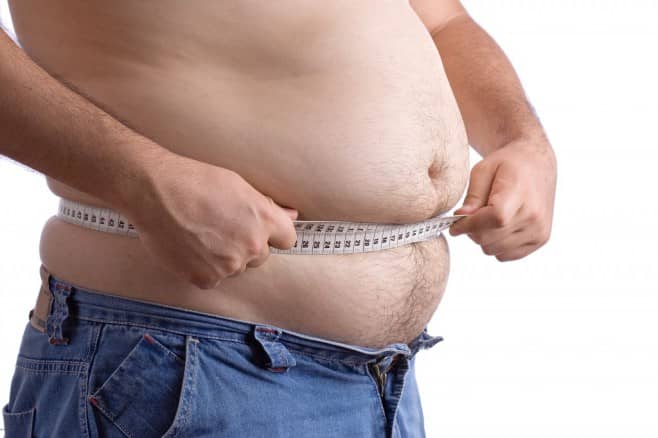Fastest Effective Ways to Lose Belly Fat for Men & Women
Fastest Effective Ways to Lose Belly Fat for Men & Women
Effective Tips for Reducing Abdominal Fat Naturally
Reducing abdominal fat is a common goal for many people seeking to improve their health and appearance. Abdominal fat, often referred to as “belly fat” or “rumen,” can lead to various health issues, including heart disease and diabetes. This article will explore ten essential topics, each with subtopics that provide detailed insights into effective strategies for naturally reducing belly fat. By focusing on healthy lifestyle changes, dietary adjustments, and targeted exercises, you can achieve a healthier, leaner body.

1. Understanding Abdominal Fat
Types of Abdominal Fat
Abdominal fat is categorized into two primary types: subcutaneous fat, which lies just beneath the skin, and visceral fat, which surrounds internal organs. Subcutaneous fat may contribute to a larger waistline but is generally less harmful than visceral fat, which is linked to serious health complications such as heart disease, type 2 diabetes, and certain cancers. Understanding these distinctions is crucial for anyone looking to reduce belly fat effectively. By focusing on reducing visceral fat through lifestyle changes, individuals can significantly improve their overall health.
Health Risks of Excess Belly Fat
Excess abdominal fat is not merely a cosmetic issue; it carries substantial health risks. Individuals with higher levels of visceral fat are more likely to develop metabolic syndrome, a cluster of conditions that increases the risk of heart disease, stroke, and diabetes. Moreover, belly fat can lead to inflammation and insulin resistance, further exacerbating health concerns. Recognizing these risks is essential for motivating individuals to adopt healthier habits and lifestyle choices.
2. The Importance of a Balanced Diet
Nutrient-Rich Foods
A well-balanced diet plays a critical role in reducing abdominal fat. Incorporating a variety of nutrient-rich foods, such as fruits, vegetables, whole grains, lean proteins, and healthy fats, provides essential vitamins and minerals while helping regulate calorie intake. Foods high in fiber, like leafy greens and whole grains, promote feelings of fullness, reducing the likelihood of overeating. Lean proteins such as chicken, fish, and legumes help build and repair muscle, which is vital for maintaining a healthy metabolism.
Foods to Avoid
To effectively reduce belly fat, it’s crucial to limit the intake of processed foods, sugary beverages, and high-calorie snacks. These items often contain unhealthy fats, added sugars, and empty calories that can contribute to weight gain and hinder fat loss efforts. Sugary drinks can lead to spikes in blood sugar and increased hunger, making it difficult to control calorie intake. By understanding which foods to avoid, individuals can make informed choices that align with their weight loss goals.
3. Hydration and Its Role in Fat Loss
Benefits of Staying Hydrated
Staying properly hydrated is a crucial element in any fat loss strategy. Water supports various bodily functions, including digestion, metabolism, and temperature regulation. Drinking adequate amounts of water can also help curb hunger, as thirst is often mistaken for hunger. Hydration plays a role in the body’s ability to metabolize fat efficiently. By drinking water consistently throughout the day, especially before meals, you can help control portion sizes and reduce calorie intake.
The Power of Lemon Water
Starting your day with lukewarm lemon water can provide numerous health benefits, particularly in the context of fat loss. Lemon water not only hydrates the body but also contains vitamin C, essential for the immune system and skin health. The acidity of lemon can aid in digestion, promoting better nutrient absorption and potentially reducing bloating. Incorporating this simple habit into your morning routine can boost your metabolism and set a positive tone for your dietary choices.
4. The Role of Exercise
Importance of Regular Physical Activity
Regular physical activity is a cornerstone of any effective fat loss strategy. Engaging in consistent exercise helps burn calories, build muscle, and improve overall health. Aim for at least 150 minutes of moderate-intensity aerobic activity each week, such as brisk walking, cycling, or swimming. Exercise not only supports weight loss but also contributes to improved mood and mental well-being. By making physical activity a regular part of your routine, you can achieve significant progress in reducing abdominal fat.
Combining Cardio and Strength Training
To maximize fat loss, it is essential to combine both cardiovascular exercises and strength training in your fitness routine. Cardio workouts effectively elevate heart rate and burn calories, while strength training builds lean muscle mass, which helps increase resting metabolic rate. This combination creates a balanced workout regimen that promotes fat loss while enhancing muscle definition. By incorporating a variety of workouts, individuals can keep their routines fresh and enjoyable.

5. Effective Core Exercises
Strengthening Your Core
Focusing on core exercises is an effective way to tone the abdominal muscles and reduce fat. Core workouts, which include exercises like planks, crunches, and leg raises, target the muscles in the abdomen, back, and pelvis. Strengthening these muscles not only improves posture and stability but also enhances athletic performance in other activities. Incorporating core exercises into your routine several times a week can lead to noticeable improvements in muscle tone and help in reducing belly fat.
High-Intensity Interval Training (HIIT)
High-Intensity Interval Training (HIIT) has gained popularity as an effective method for burning fat quickly. HIIT workouts involve alternating between short bursts of intense exercise and periods of rest or low-intensity activity. This approach maximizes calorie burn during the workout and elevates the metabolic rate for hours afterward. HIIT can include various exercises, such as sprinting, jumping, or bodyweight exercises, making it a versatile and time-efficient option for those with busy schedules.
6. Managing Stress Levels
The Connection Between Stress and Weight Gain
High stress levels can lead to weight gain, particularly in the abdominal area. Stress triggers the release of cortisol, a hormone that can increase appetite and cravings for unhealthy foods. Understanding the connection between stress and weight gain is crucial for managing belly fat effectively. By employing stress-reduction techniques, individuals can mitigate the impact of stress on their bodies and support their weight loss efforts.
Effective Stress Management Techniques
Incorporating stress management techniques such as mindfulness, yoga, or meditation can help reduce stress levels and improve overall well-being. Regular practice of these techniques can lower cortisol levels, leading to a more balanced emotional state and a healthier relationship with food. Taking time to relax and unwind is essential for maintaining both mental and physical health, making it easier to stick to a weight loss plan.
7. Quality Sleep and Its Impact
The Role of Sleep in Fat Loss
Quality sleep is often overlooked in weight loss strategies, yet it plays a significant role in regulating hormones that control appetite and metabolism. Insufficient sleep can lead to increased hunger and cravings, making it more challenging to stick to a healthy eating plan. Prioritizing sleep is essential for anyone looking to reduce belly fat effectively and maintain a healthy weight.
Tips for Improving Sleep Quality
To enhance sleep quality, establish a regular sleep schedule, create a relaxing bedtime routine, and limit screen time before bed. Additionally, keeping your sleeping environment cool and dark can promote better sleep. By focusing on improving sleep habits, individuals can support their weight loss efforts and overall health.
8. The Benefits of Meal Planning
Planning Your Meals for Success
Meal planning is an effective strategy for managing calorie intake and ensuring a balanced diet. By preparing meals in advance, individuals can make healthier choices and avoid impulsive eating. This proactive approach also allows for greater control over portion sizes and nutrient intake.
Strategies for Effective Meal Prep
To effectively plan meals, start by creating a weekly menu that includes a variety of nutrient-rich foods. Batch cooking and portioning meals can save time and make healthy eating more convenient. Additionally, keeping healthy snacks on hand can help curb cravings and prevent unhealthy snacking.
9. Understanding Portion Control
The Importance of Portion Sizes
Understanding portion control is essential for managing calorie intake and reducing belly fat. Many people underestimate portion sizes, leading to overeating. By learning to recognize appropriate serving sizes, individuals can better manage their calorie intake and support their weight loss goals.
Techniques for Controlling Portions
Using smaller plates, measuring portions, and being mindful while eating can help with portion control. Additionally, paying attention to hunger cues and eating slowly can promote better awareness of how much food is consumed, preventing overeating.
10. Surgical Options and Considerations
Understanding Liposuction
For those struggling with significant abdominal fat despite lifestyle changes, liposuction may be an option. This surgical procedure removes fat deposits from the abdomen, providing immediate results. However, it is essential to understand that liposuction is not a substitute for a healthy lifestyle and should be considered as a last resort.
Post-Surgery Maintenance
If individuals choose to undergo liposuction, maintaining a healthy diet and regular exercise routine is crucial for sustaining results. Without ongoing lifestyle changes, there is a risk of regaining weight in other areas. Therefore, a commitment to a healthier lifestyle is essential even after surgical interventions.

Conclusion
Reducing abdominal fat is a journey that requires commitment and a multifaceted approach. By understanding the nature of belly fat and implementing dietary changes, regular exercise, and healthy lifestyle habits, individuals can achieve their weight loss goals and improve their overall health. Remember that consistency is key; small, sustainable changes often lead to the most significant results.
Embrace the process, celebrate your progress, and stay motivated on your path to a healthier, leaner body. Your health and well-being are worth the effort, and every step you take brings you closer to achieving a flatter stomach and a more vibrant life.
Related Topics
- Be Happy Every Day by Doing These 6 Tips All the Time
- Did You Know That Laughter is Medicine For Many Diseases?
- 7 Tips To Burn Fat and Lose Weight in Natural Ways
- Prevention of Influenza and Diseases in the Cold Winter
- A Chinese Study on Food Types That Avoid Stomach Cancer
6 Facts About Injuries and Death from Extreme Heat Waves






